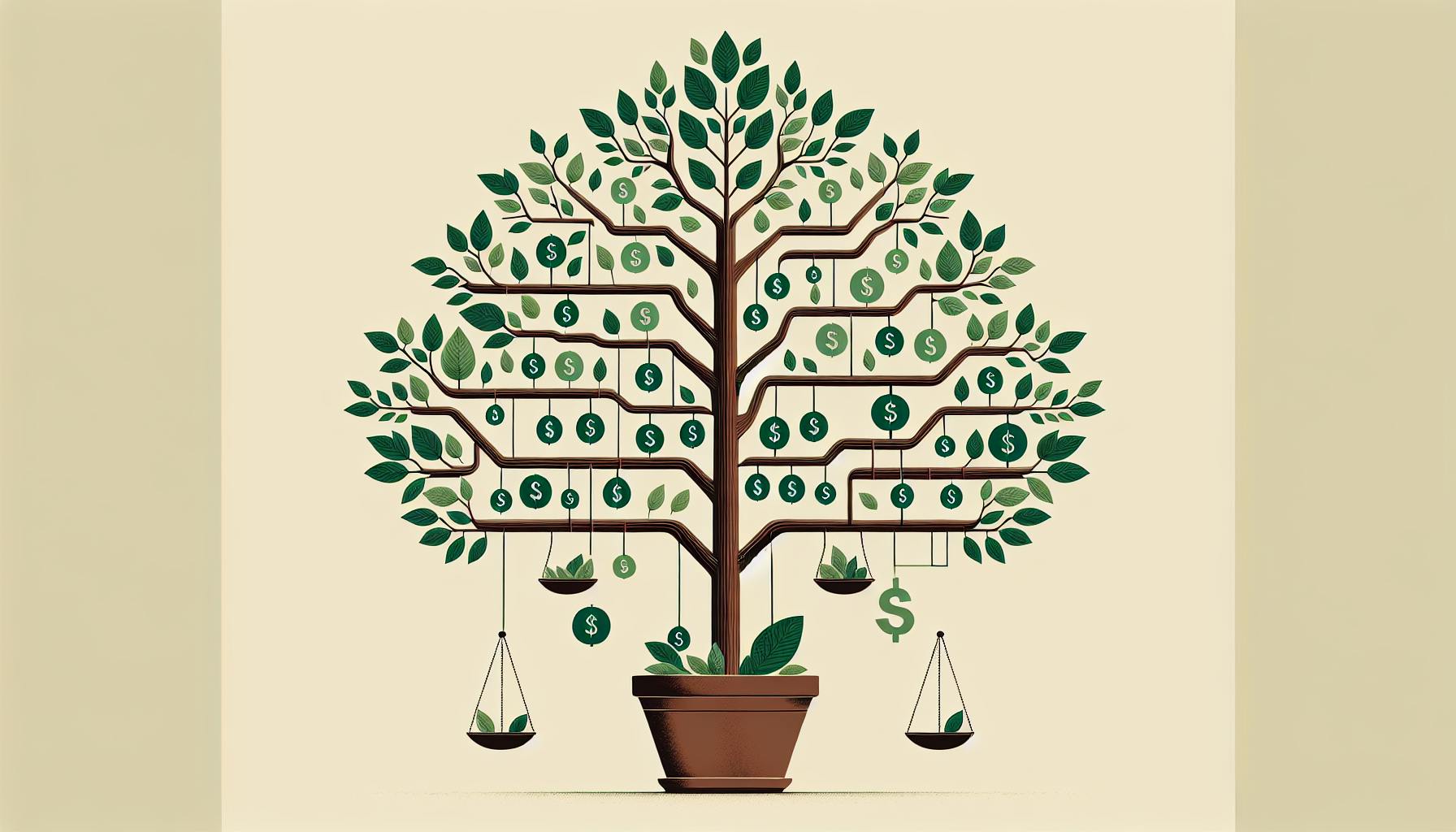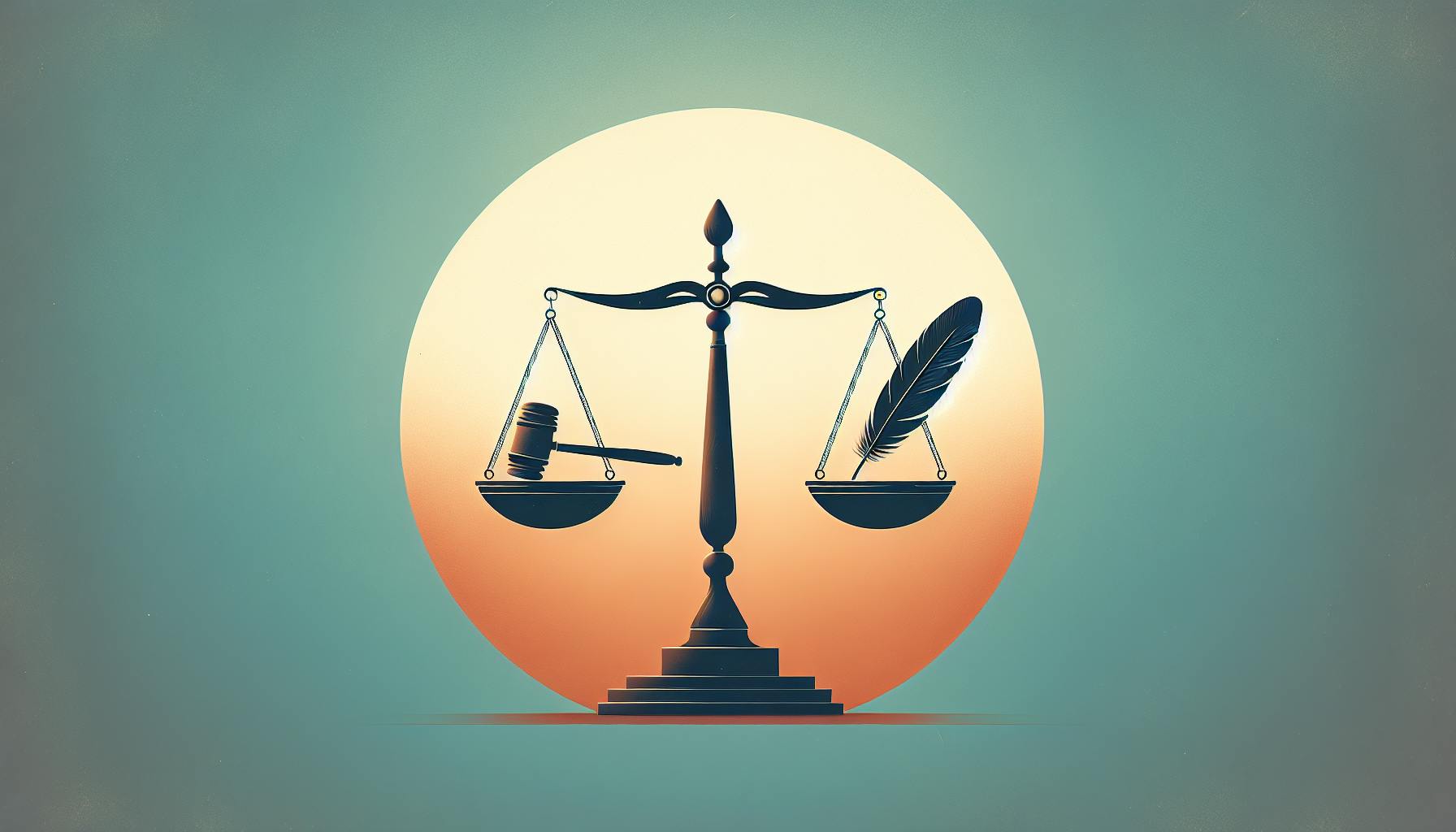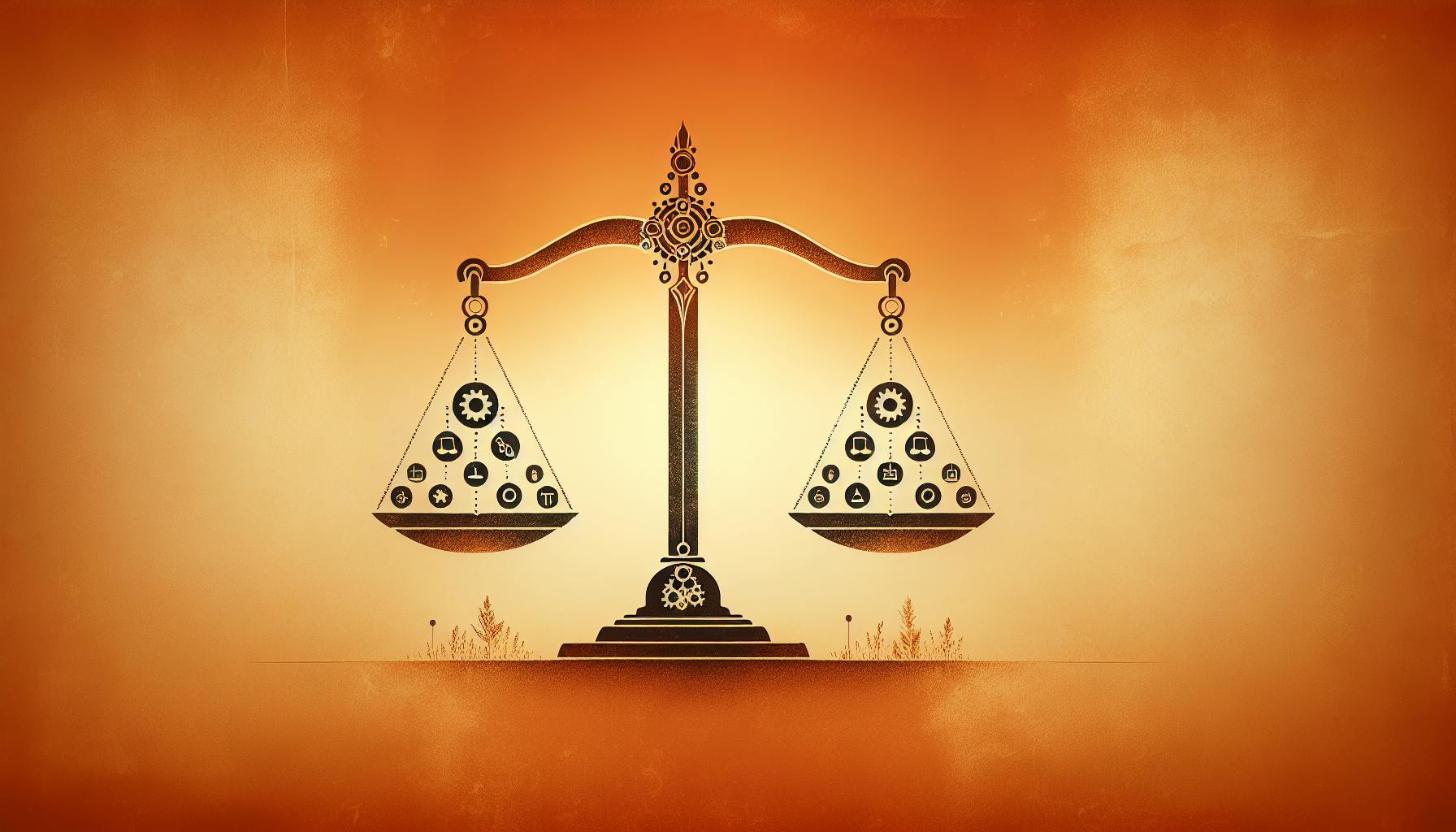Understanding the intricate legislative process can seem daunting to many citizens.
This article will clearly explain the key stages a bill goes through on its journey to become law, as outlined in Article I, Section 7 of the U.S. Constitution.
You'll learn the step-by-step path a bill takes, from drafting all the way to presidential action, including crucial steps like congressional committee review and floor debate/voting. Key players and terms will also be defined to help demystify this critical component of American government.
Deciphering Article I, Section 7 of the Constitution: The Blueprint for a Bill to Law
This section provides an overview of Article I, Section 7, which outlines the process for a bill to become a law. It summarizes the key steps and players involved.
Understanding the Legislative Process Under Article I, Section 7
Article I, Section 7 of the U.S. Constitution details the process that a bill goes through to become law. This clause establishes that all bills regarding taxation must originate in the House of Representatives. It also outlines that bills must pass both the House and Senate and be approved by the President to become law. If the President vetoes a bill, Congress can override that veto with a two-thirds vote in both chambers.
The Framers created this process to provide checks and balances on power in the legislative branch. By requiring approval from both chambers of Congress as well as the President, it prevents any one person or body from unilaterally passing laws. It also gives the people, through their elected representatives, more control over the laws that govern them.
The Path from Bill to Law: A Step-by-Step Guide
Here is the step-by-step process a bill goes through under Article I, Section 7 to become law:
- Bill introduction and referral to a committee
- Committee review and markup of the bill
- Committee vote to send the bill to the full chamber
- Debate and vote on the bill in the full House and Senate
- Conference committee if House and Senate pass different versions
- Final votes on the compromise bill
- President signs or vetoes the bill
- Congress can override a veto with a two-thirds vote
This lengthy process provides many opportunities for debate, compromise, and refinement of proposed laws before they are enacted.
The Significance of Clause 2 in the Legislative Journey
Article I, Section 7, Clause 2 states: "Every Bill which shall have passed the House of Representatives and the Senate, shall, before it become a Law, be presented to the President of the United States."
This clause gives the President veto power over any bills passed by Congress. This provides a check on Congress' lawmaking authority and prevents them from passing laws without the President's approval.
The presidential veto injects more debate and public participation into the legislative process. It forces Congress to pass bills with broader consensus if they want to override a veto. This clause balances power between the legislative and executive branches.
Article I, Section 7 and the 3rd Paragraph's Impact on Lawmaking
The 3rd paragraph of Article I, Section 7 allows Congress to override a presidential veto if two-thirds of both houses vote to pass the bill anyway. This gives Congress recourse if they strongly disagree with the President's veto.
However, rallying a two-thirds majority is difficult. This means the veto threat still carries weight, forcing Congress to pass widely-supported bills. The override provision balances the scales of power between the legislative and executive branches.
Overall, Article I, Section 7 creates a complex process for bills to become laws. But this process ensures consensus and thoughtful consideration of the laws governing the American people. The checks and balances protect against misuse of power by any one branch of government.
What does Article 1 of Section 7 of the Constitution explain?
Article I, Section 7 of the U.S. Constitution outlines the process for how a bill becomes a law. Specifically, it explains:
-
The Origination Clause: All bills for raising revenue must start in the House of Representatives. The Senate can propose amendments, but revenue bills must originate in the House.
-
How a bill becomes law: For a bill to become law it must pass both the House and Senate. Then it goes to the President. If the President approves, they sign the bill and it becomes law. If the President vetoes, the bill goes back to Congress. Congress can override a veto with a 2/3 vote in both chambers, in which case the bill becomes law over the President's objection.
-
Congress' role in lawmaking: Article I, Section 7 gives Congress the power to make laws through this process of passing bills through both chambers and presenting them to the President. The section defines Congress' essential legislative function.
So in summary, Article I, Section 7 creates the process for how bills become laws, gives Congress the legislative power, and requires revenue bills to start in the House. It's an important part of how federal laws are made.
What does Article 7 of the bill of Rights mean?
Article VII of the U.S. Constitution establishes the process for ratification. Specifically, it states:
The Ratification of the Conventions of nine States, shall be sufficient for the Establishment of this Constitution between the States so ratifying the Same.
In simpler terms, Article VII declares that the Constitution would go into effect and become binding among the states once it was ratified (approved) by nine of the thirteen states.
This article outlined that the Constitution would be considered legally binding after being ratified by 9 of the 13 original states. This established the threshold for adopting the new Constitution to replace the existing Articles of Confederation.
What process was explained in Article 7 of the Constitution?
Article I, Section 7 of the U.S. Constitution outlines the process for how a bill becomes a law. This section establishes that for a bill to become law, it must pass both the House of Representatives and the Senate and then be presented to the President for signature.
Specifically, Article I, Section 7, Clause 2 states that every bill passed by the House and Senate must be presented to the President before becoming law. If the President approves the bill, they sign it into law. However, if the President vetoes the bill, it goes back to Congress. Congress can override a presidential veto with a two-thirds vote in both the House and Senate.
Article I, Section 7, Clause 3 also establishes that any orders, resolutions, or votes that require approval by both the House and Senate must follow the same process as a bill.
In summary, Article I, Section 7 lays out the legislative process, explaining the journey a bill must take to become law, from Congressional approval to presidential signature. It grants veto power to the President but also gives Congress the ability to override vetoes. This system of checks and balances is a key element of the U.S. government.
What is the meaning of Section 7?
Section 7 of the U.S. Constitution outlines the process for how a bill becomes a law. Specifically, it states:
"All bills for raising revenue shall originate in the House of Representatives; but the Senate may propose or concur with amendments as on other bills."
This is more commonly known as the Origination Clause or the Revenue Clause. Here are some key points about Section 7:
-
It establishes that all bills related to raising revenue (taxes, duties, imposts, etc.) must start in the House of Representatives. The Senate can then propose amendments, but revenue bills must originate in the House.
-
The purpose is to give the directly elected House initial control over taxation, aligning with the principle of "no taxation without representation."
-
Section 7 reinforces the separation of powers and system of checks and balances between the two chambers of Congress. Neither chamber has unilateral control over new taxes or spending.
-
This clause only applies to bills that raise revenue. It does not apply to bills about spending, regulation, or other matters.
So in summary, Article I, Section 7 sets ground rules for the legislative process, giving the House first responsibility for taxation while preserving the Senate's ability to review and amend legislation. It balances the powers of the two chambers with regards to revenue and taxation.
sbb-itb-585a0bc
sbb-itb-585a0bc
Initiating the Legislative Process: From Bill Drafting to Committee Action
The legislative process begins with the drafting and introduction of a bill. Bills can originate in a few key ways:
The Genesis of a Bill in U.S. Congress
- Members of Congress can introduce bills on any subject at any time. This allows them to address issues important to their constituents.
- The President can request members of Congress introduce legislation on a specific issue. This allows coordination between the executive and legislative branches.
- Congressional committees can introduce bills after studying an issue within their jurisdiction. This allows bills to be crafted by subject matter experts.
Once introduced, bills are referred to the committee(s) that have jurisdiction over the issue. The committee then reviews the bill in detail.
Committee Scrutiny: The Crucial First Filter in the Legislative Process
Congressional committees play a gatekeeping role in determining if a bill should move forward in the legislative process. When reviewing a bill, the committee will:
- Hold hearings to gather facts and opinions on the issue from experts and stakeholders.
- Debate the bill's merits and mark it up by proposing amendments.
- Vote on whether to report the bill back to the full chamber favorably, unfavorably, or take no action.
Getting through committee review is often the most difficult hurdle for a bill to clear. Only bills that committee members broadly agree address a pressing issue tend to get reported out for further consideration.
Debate and Decision-Making: The Congressional Floor in Action
The consideration and passage of bills by the full House and Senate is a complex process that involves extensive debate, amendments, and voting on the congressional floor.
Navigating the Legislative Gauntlet: Debate and Amendments
Once a bill is reported out of committee, it goes to the full chamber for consideration. This opens up debate on the bill, where members can discuss the merits and issues with the legislation. During debate, members can propose amendments to modify, limit, or expand various provisions of the bill. There is an open process for offering amendments, which must be approved by a majority vote before being added to the bill. This allows the legislation to be shaped and refined according to the wishes of the members.
The Voting Process: How a Bill Moves Through Congress
After debate and amendments, the final version of the bill must pass in both the House and Senate by a majority vote. This formal vote determines if the bill will advance or be defeated. If passed, it moves to the other chamber to go through a similar process of consideration and voting. Complex rules govern the voting mechanisms in each chamber. Once a bill passes both the House and Senate in identical form, it can be presented to the President for signature into law or veto. Passing a bill in both chambers often requires lengthy negotiations to resolve differences.
Reconciling Differences: The Role of Conference Committees
If the House and Senate pass different versions of a bill, a conference committee is formed to reconcile the differences. This committee is made up of members from both chambers who negotiate and craft compromises.
Conference Committee Dynamics: Crafting a Compromise
The conference committee is typically made up of senior members from the committees that originally considered the bill. They meet to resolve differences between the House and Senate versions by proposing compromises. Disagreements can sometimes take weeks or months to work through.
The Final Hurdle: Congressional Approval and Presidential Action
Once the conference committee agrees on the final bill language, it goes back to both chambers for a final vote. If approved, the bill is enrolled by the Clerk of the House or Secretary of the Senate. It is then presented to the President, who can sign or veto the bill.
Understanding Clause 3's Influence on the Legislative Outcome
Clause 3 of Article I, Section 7 requires that any bill passed by both houses of Congress must contain identical language before being presented to the President. This makes conference committees crucial in crafting compromise language that can meet this requirement and successfully complete a bill's journey into law.
The Architects of Legislation: Key Players in the Bill to Law Process
The legislative process involves many key players that shape how a bill becomes a law. This section will summarize the main groups and individuals involved in shepherding bills through Congress.
The Pivotal Role of Members of Congress in the Legislative Process
Senators and Representatives play critical roles in the legislative process. As elected officials, they are responsible for identifying issues, drafting bills, building support through co-sponsorships, debating bills, and voting on passage.
Specifically, Members of Congress:
- Spot problems and propose solutions in the form of bills
- Research issues and write bill language
- Seek co-sponsors who support their bills
- Advocate for their bills in hearings and on the floor
- Vote on bills in committee and on the floor
Their participation is essential for bills to move through the complex lawmaking process. Members shape policy priorities through the bills they introduce and lend their political capital to push bills forward.
The Gatekeepers: Congressional Committees and Their Influence
Congressional committees have substantial influence over the fate of bills. As subject-matter experts, they:
- Hold hearings to debate bills
- Mark up bills and reconcile differences
- Vote to advance favorable bills to the floor
Committees gatekeep which bills progress, combining, revising, or rejecting proposals. This power over bills varies by chamber:
- House committees more strictly control bill content and language before sending bills to the floor
- The Senate has more flexibility in amending bills on the floor
Still, committees in both chambers play the pivotal role of evaluating bills and determining if they deserve floor consideration. Their decisions carry great weight in deciding which few bills survive the long journey to become law.
Engaging with the Legislative Process: Tools for Tracking and Participation
Legal Buddies provides specialized legal support services to help law firms monitor legislation and effectively engage with the legislative process. Our team of legal virtual assistants can track bills, analyze impacts, and contact elected representatives on your behalf.
Leveraging Congress.gov for Legislative Tracking
Congress.gov allows users to search and track legislation as it moves through Congress. Some key features include:
- Search bills by keyword, status, sponsor, committee, and more
- View bill summaries, full text, amendments, committee reports, and related bills
- Track a bill's major actions from introduction to becoming law
- Get email updates on bill activity
Integrating a legal virtual assistant into your team through Legal Buddies provides additional tracking support. We monitor relevant bills, analyze impacts, and provide regular status reports tailored to your needs.
Influencing Legislation: How to Engage with Your Legislators
Sharing your perspective with elected representatives is vital for impacting legislation. Here are some best practices:
-
Identify your Senators and Representative based on your location. Their contact information can be found on Congress.gov.
-
Be clear and concise when communicating your stance. Provide specific examples of how the bill would impact you.
-
Follow up to confirm your message was received. Consider scheduling an in-person meeting.
Our legal virtual assistants can handle outreach to legislators on your behalf. We craft customized messages representing your firm's interests and ensure your voice is heard on relevant legislation.
Wrapping Up: A Recap of Article I, Section 7 and the Legislative Process
Recaps the major steps for a bill becoming law under Article I, Section 7 and legislative terms covered.
The Legislative Process in Review: Key Stages and Terms
The legislative process has several key stages that a bill goes through on its journey to potentially becoming a law:
-
Introduction - The bill is introduced in either the House or Senate. This marks the beginning of the legislative process.
-
Committee Action - The bill is assigned to a committee that will research, discuss, and make changes to the bill.
-
Subcommittee Review - The bill may also be sent to a subcommittee for further review and edits.
-
Committee Vote - The committee members vote on whether to send the bill to the full chamber.
-
Full Chamber Consideration and Vote - The entire House or Senate debates the bill and votes on passage.
-
Conference Committee - If the House and Senate pass different versions, a conference committee works out the differences.
-
Bill Sent to President - The final version approved by both chambers is sent to the President.
-
Presidential Action - The President decides whether to sign or veto the bill.
Key legislative terms covered:
- Bill - The drafted legislation that may become law
- Law - The final bill approved by Congress and the President
- Veto - The President's rejection of a bill
- Override - Congress voting to enact a bill despite a presidential veto
Decoding Legislative Jargon: A Glossary of Key Terms
Bill - A proposal for a new law drafted by Congress
Law - A bill approved by both chambers of Congress and the President
Veto - The President's rejection of a bill passed by Congress
Override - When Congress votes by a 2/3 majority to enact a bill over the President's veto


